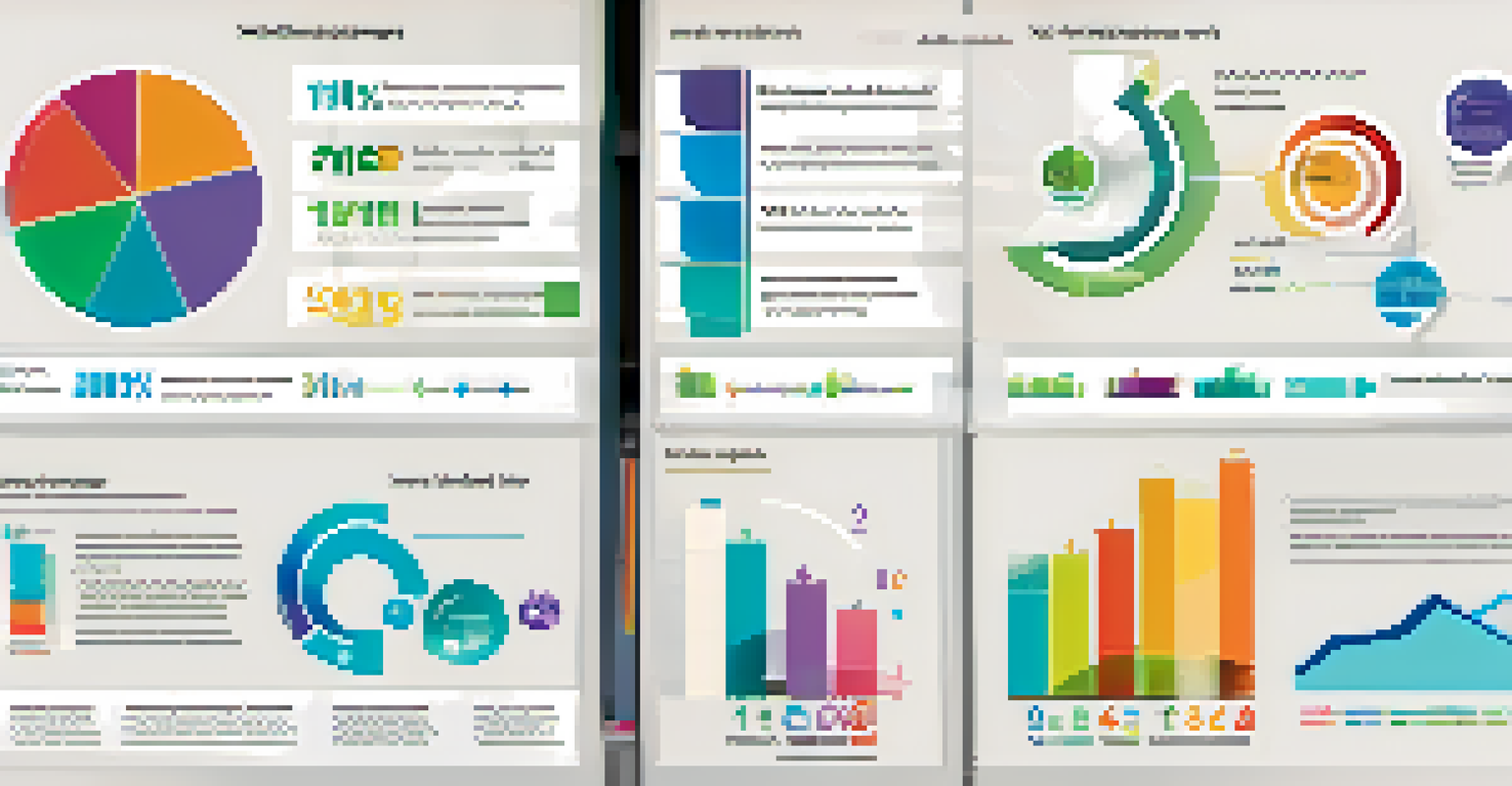Evaluating Change Management Success: Metrics and KPIs

Understanding Change Management and Its Importance
Change management involves the structured approach to transitioning individuals, teams, and organizations from a current state to a desired future state. It's crucial because successful change can lead to improved efficiency, better employee engagement, and enhanced overall performance. Without effective change management, organizations may face resistance and disruptions that hinder progress.
Change is the law of life. And those who look only to the past or present are certain to miss the future.
For instance, consider a tech company implementing a new software tool. If the change is poorly managed, employees might resist using the new system, leading to decreased productivity. On the other hand, a well-executed change management plan ensures everyone understands the benefits and uses the tool effectively.
Thus, evaluating the success of change management initiatives is essential to ensure that organizations meet their goals and adapt successfully to new challenges.
Defining Success in Change Management
Success in change management is often defined by how well the change aligns with organizational objectives and how effectively it meets the needs of stakeholders. This definition may vary between organizations, but common indicators include employee satisfaction, project completion rates, and overall performance improvements. Understanding these success factors is vital for setting the right metrics.

For example, if a company rolled out a new customer relationship management (CRM) system, success might be measured by increased sales productivity or higher customer satisfaction scores. Defining these parameters upfront helps in gauging the effectiveness of the change initiatives.
Importance of Change Management
Effective change management is essential for improving efficiency, employee engagement, and overall performance within organizations.
Ultimately, having a clear definition of success provides a roadmap for the metrics and KPIs that will be used to evaluate change management outcomes.
Key Metrics for Change Management Evaluation
Key metrics in change management often include employee engagement scores, adoption rates of new systems, and performance efficiency. These metrics provide quantifiable data that can help organizations understand how well the change is being accepted and integrated into everyday practices. For instance, measuring the percentage of employees who adopt a new technology within a certain timeframe can give insights into its acceptance.
The greatest danger in times of turbulence is not the turbulence; it is to act with yesterday’s logic.
Additionally, tracking productivity levels before and after the change can highlight areas of improvement or concern. Suppose a manufacturing company introduces a new production line; measuring output per hour can help assess whether the change has led to increased efficiency.
By focusing on relevant metrics, organizations can gain a clearer picture of the change process and make informed adjustments when necessary.
Essential KPIs for Measuring Change Success
Key Performance Indicators (KPIs) serve as specific, measurable values that reflect how effectively an organization is achieving its key business objectives. In change management, KPIs might include the time taken to implement changes, cost savings achieved, and the rate of employee training completion. These indicators help in monitoring progress and ensuring that the change initiative is on track.
For example, if a company sets a KPI to complete training for 90% of employees within a month of a change, they can quickly identify if additional resources are needed to meet that target. KPIs also help in celebrating small wins, which can boost morale and encourage further engagement with the change process.
Defining Success Metrics
Success in change management should be measured through specific metrics and KPIs that align with organizational objectives and stakeholder needs.
Establishing KPIs upfront allows organizations to align their change management efforts with their overall business goals, ensuring that every step taken is purposeful and measurable.
Employee Feedback: A Vital Component of Evaluation
Gathering employee feedback is crucial in evaluating the success of change management efforts. Surveys, focus groups, and one-on-one interviews can provide insights into how employees perceive the changes and any challenges they face. This feedback not only aids in assessing the effectiveness of the change but also helps identify areas for improvement.
For instance, if several employees express confusion about a new process, it may indicate that additional training sessions are necessary. Listening to employee concerns can foster a more inclusive environment and facilitate smoother transitions by addressing issues proactively.
Incorporating employee feedback into the evaluation process ensures that the human aspect of change is considered, making the transition smoother and more effective.
Analyzing Data: Turning Insights into Action
Once metrics and KPIs have been established, analyzing the collected data is the next critical step. This analysis can reveal trends, successes, and areas needing improvement. For example, if the data shows low adoption rates for new software, it may indicate a need for more training or clearer communication about its benefits.
Data analysis can be likened to looking at a map while on a journey; it helps organizations navigate challenges and make informed decisions. By continuously analyzing data during and after the change process, organizations can adapt their strategies and ensure ongoing success.
Continuous Improvement Approach
Evaluating change management should be an ongoing process that fosters a culture of learning and adaptability within the organization.
Ultimately, data-driven insights empower organizations to not only assess the current state of change management but also to plan for future initiatives.
Continuous Improvement: Learning from Each Change Initiative
Evaluating change management success is not a one-time effort; it should be part of a continuous improvement process. Each change initiative provides valuable lessons that can inform future efforts. By reflecting on what worked well and what didn’t, organizations can refine their approaches and enhance their change management practices.
For example, if a specific communication strategy led to high employee engagement during one change, it may be worth replicating in future initiatives. Continuous improvement fosters a culture of learning, encouraging teams to embrace change rather than resist it.

In conclusion, by viewing change management evaluation as an ongoing process, organizations can create a more adaptable and resilient workforce.